- Characteristics of Tunberg Barberry
- Cultivation of Tunberg Barberry
- Choosing the Right Location
- Planting Tunberg Barberry
- 1. Location
- 2. Soil Preparation
- 3. Planting
- 4. Spacing
- 5. Mulching
- 6. Watering
- 7. Pruning
- 8. Fertilizing
- Maintaining Tunberg Barberry
- Watering
- Pruning
- Fertilizing
- Pest and Disease Control
- Winter Care
- Propagation
- Companion Planting
- Common Varieties of Tunberg Barberry
- Tunberg Barberry Pruning and Propagation
- Pruning
- Propagation
- Question-answer:
- How can I cultivate Tunberg Barberry?
- What are the different varieties of Tunberg Barberry?
- Can Tunberg Barberry tolerate cold temperatures?
- How tall does Tunberg Barberry grow?
- What are the uses of Tunberg Barberry in landscaping?
- Does Tunberg Barberry require regular pruning?
- Are there any pests or diseases that affect Tunberg Barberry?
- Video: How I’m growing Barberry in my Garden: Secrets. Barberries varieties // Alexa’s Garden
The Tunberg Barberry (Berberis thunbergii) is a shrub native to Japan. It is a popular ornamental plant due to its attractive foliage and vibrant berries. This article will explore the cultivation of Tunberg Barberry and provide a description of some popular varieties.
Tunberg Barberry is a small deciduous shrub that typically grows to a height of 3 to 4 feet. It has arching branches with small, oval-shaped leaves that are green in color. During the fall, the leaves turn a stunning shade of red, adding a splash of color to any landscape. The plant also produces clusters of small yellow flowers in the spring, which give way to bright red berries in the summer.
When it comes to cultivation, Tunberg Barberry is a relatively low-maintenance plant. It prefers well-drained soil and can tolerate a wide range of soil types, including sandy or clay soils. It is also drought-tolerant, making it an excellent choice for dry regions. However, it does require full sun to thrive, so planting it in a sunny location is essential.
There are several popular varieties of Tunberg Barberry, each with its unique characteristics. One of the most well-known varieties is ‘Atropurpurea’, which has dark purple foliage throughout the growing season. Another popular variety is ‘Golden Ruby’, which features bright golden leaves that turn orange-red in the fall. ‘Kobold’ is a dwarf variety that only grows to a height of 2 feet and has a compact, rounded shape.
In conclusion, Tunberg Barberry is a beautiful shrub that is easy to cultivate and adds color and interest to any garden. Whether you choose a dark purple variety or a golden one, the vibrant foliage and bright berries of these plants are sure to make a statement.
Characteristics of Tunberg Barberry
- Tunberg Barberry, also known as Berberis thunbergii, is a deciduous shrub native to Japan.
- The plant has an average height of 1-2 meters and a spread of 1-1.5 meters.
- It has small yellow flowers that bloom in spring, followed by red berries in autumn.
- The leaves of Tunberg Barberry are small and oval-shaped, with a glossy dark green color.
- The shrub has a dense and compact growth habit, which makes it suitable for hedges and borders.
- Tunberg Barberry is known for its thorny branches, which act as a natural deterrent to intruders.
- It is a hardy plant that can tolerate a wide range of soil conditions, including clay, loam, and sandy soil.
- It prefers full sun exposure but can also tolerate partial shade.
- Tunberg Barberry is resistant to diseases and pests, making it a low-maintenance shrub.
- Pruning is recommended in late winter or early spring to maintain its shape and remove any dead or damaged branches.
In conclusion, Tunberg Barberry is a versatile and attractive shrub with small yellow flowers, red berries, and glossy dark green leaves. It is a hardy plant that can thrive in a variety of soil conditions and is resistant to diseases and pests. Its compact growth habit and thorny branches make it suitable for hedging and bordering purposes.
Cultivation of Tunberg Barberry
Tunberg barberry (Berberis thunbergii) is a popular ornamental shrub known for its vibrant fall foliage and low maintenance requirements. Here are some important tips for successfully cultivating Tunberg barberry in your garden:
- Choosing the right location: Tunberg barberry prefers full sun but can tolerate partial shade. It grows well in well-drained soil with a pH range of 5.5 to 7.0. Select a suitable spot with adequate space for the mature size of the plant.
- Planting: Dig a hole that is slightly wider and deeper than the root ball of the barberry plant. Place the plant in the hole, ensuring that the top of the root ball is level with or slightly above the soil surface. Backfill the hole with soil, firming it gently around the roots.
- Watering: Water the newly planted barberry shrub thoroughly and maintain regular watering until it becomes established. After that, barberry is relatively drought-tolerant and only requires supplemental watering during prolonged dry periods.
- Pruning: Prune Tunberg barberry in late winter or early spring to remove any dead or damaged branches. Additionally, you can shape the shrub by selectively removing some of the oldest stems. Avoid pruning in late summer or fall as it may stimulate new growth that won’t harden off in time for winter.
- Fertilizing: Barberry plants generally do not require much fertilizer. If the soil is poor or lacking in nutrients, you can apply a balanced slow-release granular fertilizer in early spring. Follow the package instructions for the appropriate amount to use.
By following these cultivation tips, you can enjoy the beauty of Tunberg barberry in your garden and create a vibrant landscape. Remember to check for any specific requirements for the particular variety of barberry you are growing and adjust your care accordingly.
Choosing the Right Location
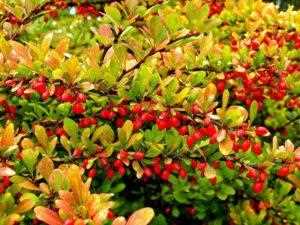
When it comes to growing Tunberg Barberry, it is important to choose the right location for optimal growth and development. Here are some factors to consider when selecting a suitable location:
- Sunlight: Tunberg Barberry thrives in full sun to partial shade. Choose a location that receives at least 6 hours of direct sunlight per day for best results.
- Soil: This species of barberry prefers well-draining soil with a pH range between 5.0 and 7.5. It can tolerate a wide range of soil types, including sandy or clay soil, but it should not be waterlogged.
- Temperature: Tunberg Barberry is hardy to zones 4-8 and can withstand cold temperatures. However, extreme heat can be detrimental to its growth. Choose a location that is protected from hot afternoon sun.
- Wind: Strong winds can damage the delicate branches of Tunberg Barberry. Planting it in a location that is sheltered from strong winds or providing a windbreak can help protect the plant.
- Space: Tunberg Barberry can spread up to 3-4 feet and reach a height of about 2-3 feet. Make sure to provide enough space for the plant to grow and avoid overcrowding.
- Accessibility: Consider the accessibility of the location for maintenance and harvesting. Planting it in an area that is easily accessible will make pruning, fertilizing, and harvesting easier.
By considering these factors and selecting the right location for your Tunberg Barberry plants, you can ensure their healthy growth and enjoy their beautiful foliage and berries for years to come.
Planting Tunberg Barberry
Tunberg Barberry is a versatile and easy-to-grow plant that thrives in a variety of conditions. Follow these guidelines to ensure successful planting and establishment of Tunberg Barberry in your garden.
1. Location
Choose a location that receives at least 6 hours of direct sunlight per day. Tunberg Barberry can tolerate partial shade, but full sun is ideal for maximizing its growth and flowering potential.
2. Soil Preparation
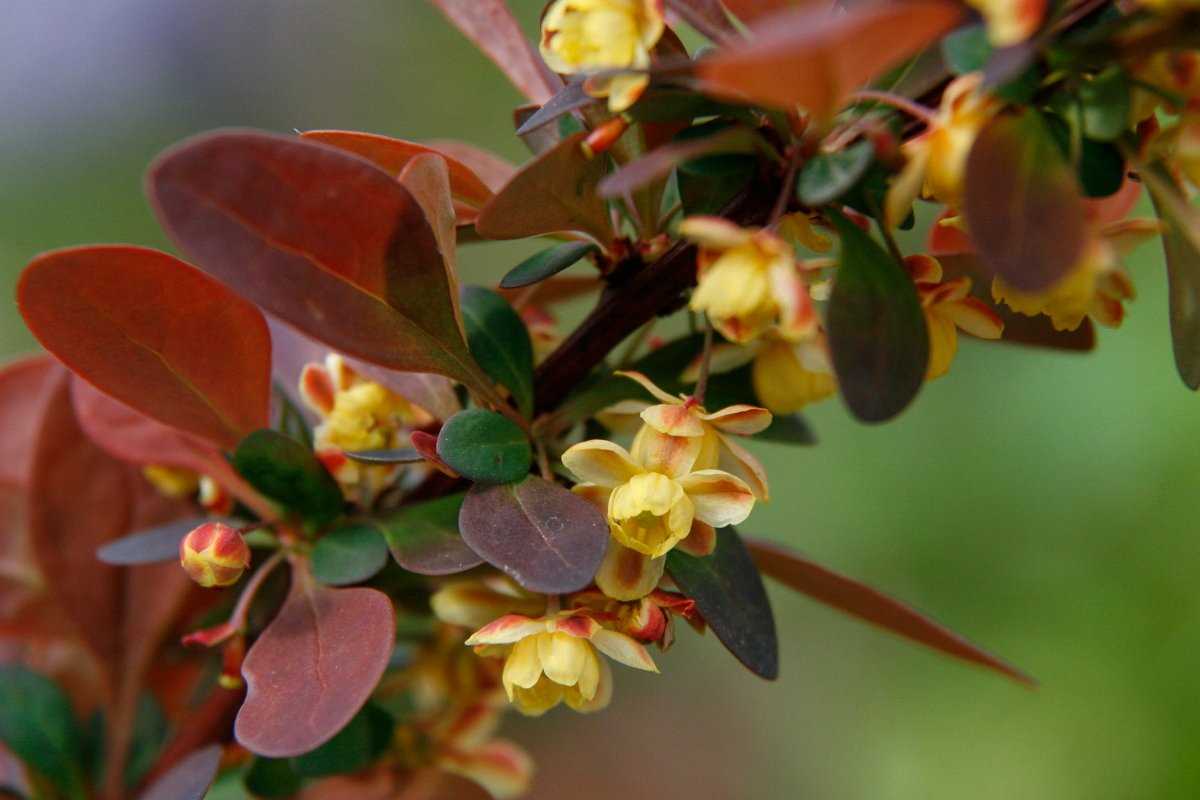
Tunberg Barberry prefers well-draining soil with a pH range of 6.0 to 7.5. Before planting, prepare the soil by removing any weeds or grass from the planting area. Loosen the soil to a depth of at least 12 inches and amend it with organic matter, such as compost, to improve drainage and fertility.
3. Planting
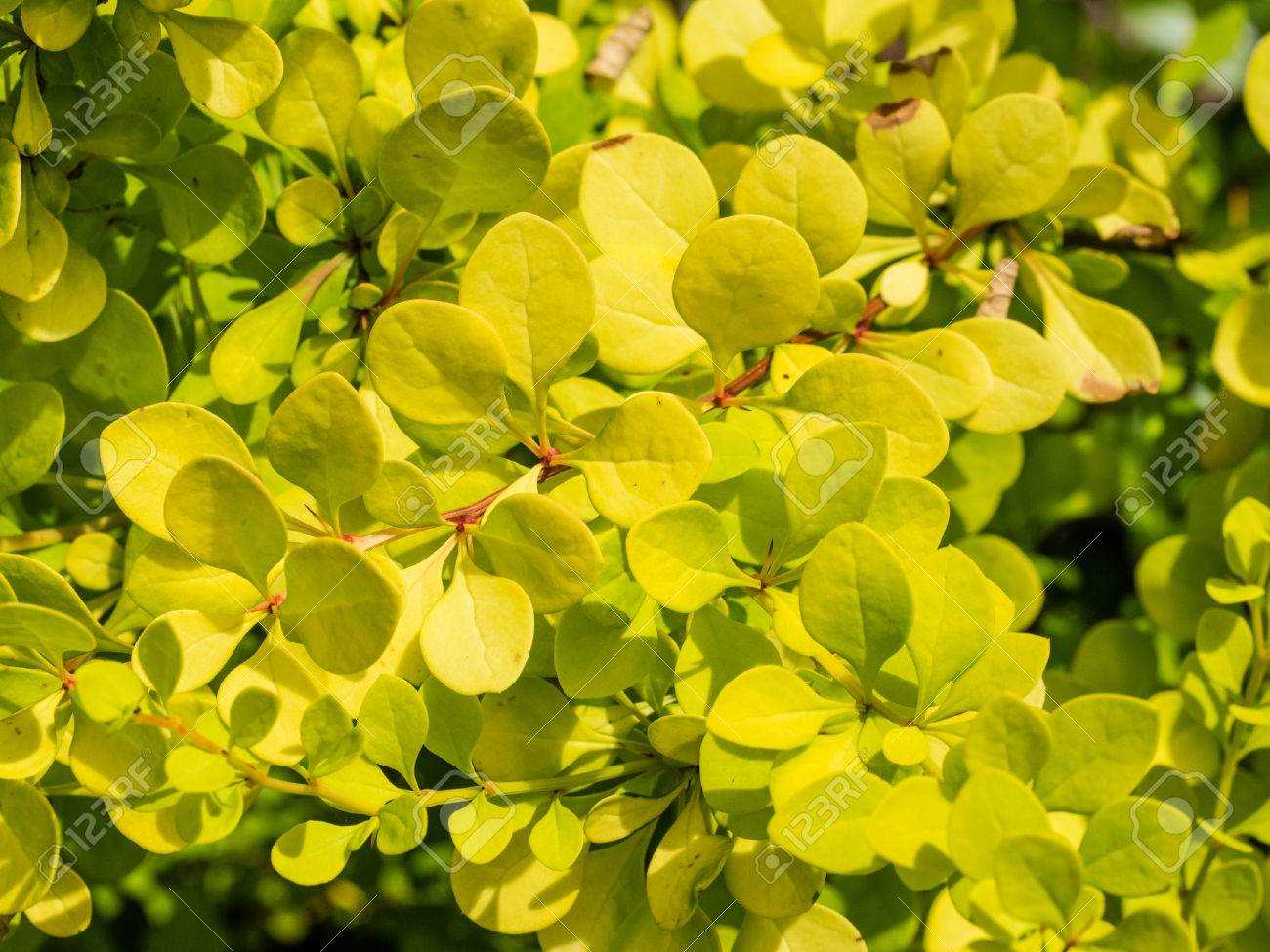
Dig a hole that is slightly larger and wider than the root ball of the Tunberg Barberry plant. Place the plant in the hole, making sure that the top of the root ball is level with the surrounding soil. Backfill the hole with soil, firming it gently around the roots to eliminate any air pockets. Water thoroughly after planting to settle the soil and ensure good root-to-soil contact.
4. Spacing
Space Tunberg Barberry plants at a distance of 2 to 3 feet apart to allow for their mature size and to promote good air circulation between the plants.
5. Mulching
Apply a layer of organic mulch, such as wood chips or shredded bark, around the base of the plants. Mulching helps conserve soil moisture, suppress weed growth, and regulate soil temperature.
6. Watering
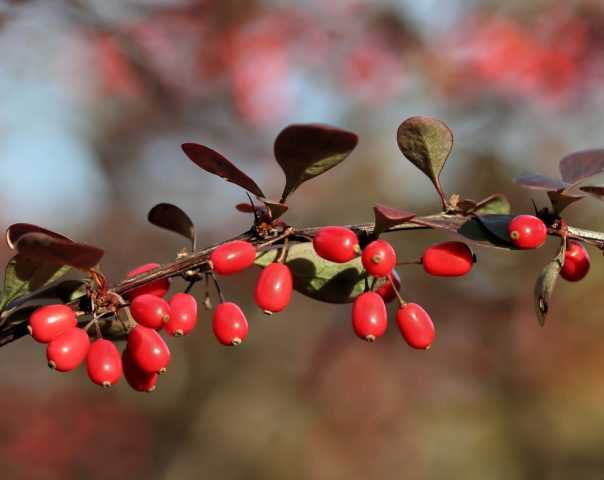
Keep the soil evenly moist but not waterlogged during the first growing season. Once established, Tunberg Barberry is drought tolerant and will only require supplemental watering during prolonged dry periods.
7. Pruning
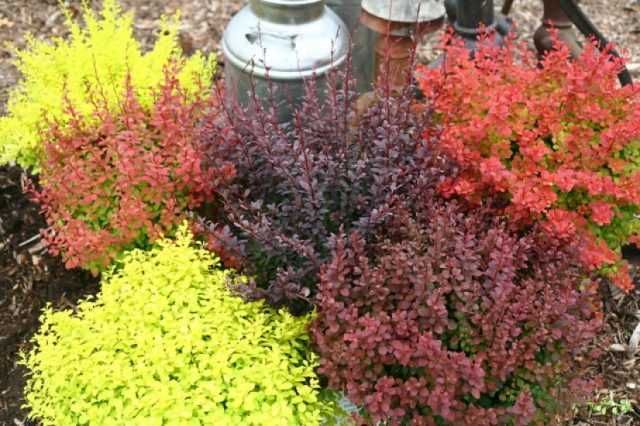
Prune Tunberg Barberry in late winter or early spring to remove any dead, damaged, or crossing branches. This will improve the plant’s overall health and appearance.
8. Fertilizing
Fertilize Tunberg Barberry with a balanced slow-release fertilizer in early spring. Follow the manufacturer’s instructions for application rates and timing.
By following these planting guidelines, you can enjoy the beauty and benefits of Tunberg Barberry in your garden for years to come.
Maintaining Tunberg Barberry
Watering
Tunberg barberry plants need regular watering, especially during the first year of growth. Ensure that the soil is consistently moist but not waterlogged. A layer of mulch around the base of the plant can help retain moisture.
Pruning
Regular pruning is essential to maintain the desired shape and size of Tunberg barberry plants. Prune branches that are overcrowded, crossing, or damaged. It is best to prune in early spring before new growth starts.
Fertilizing
Tunberg barberry has moderate fertilizer needs. Apply a balanced slow-release fertilizer in early spring to promote healthy growth. Avoid over-fertilizing, as it can lead to excessive vegetative growth and weak stems.
Pest and Disease Control
Tunberg barberry is relatively resistant to pests and diseases. However, it can be susceptible to aphids, scale insects, and fungal diseases in certain conditions. Regularly inspect the plants for any signs of infestations or diseases and take appropriate measures to control them.
Winter Care
In colder climates, Tunberg barberry may require some protection during winter. Apply a layer of mulch around the base of the plant to protect the roots from freezing temperatures. In extremely cold regions, consider covering the plants with burlap or other protective materials.
Propagation
Tunberg barberry can be propagated through stem cuttings or by division. Take stem cuttings in late spring or early summer and root them in a well-draining potting mix. Division can be done in early spring or fall by carefully separating the plant into smaller sections with roots.
Companion Planting
Tunberg barberry can be used as a vibrant and attractive addition to a mixed planting scheme. Pair it with plants that have contrasting foliage colors or textures, such as silver-leaved plants or ornamental grasses. However, avoid planting Tunberg barberry near susceptible crops or plants that are sensitive to shade.
Common Varieties of Tunberg Barberry
Tunberg Barberry is a popular shrub that is known for its vibrant, red foliage and small yellow flowers. There are several different varieties of Tunberg Barberry, each with its own unique characteristics. Here are some of the most common varieties:
Atropurpurea – This variety of Tunberg Barberry features dark purple leaves that turn a deep red in the fall. It is a compact shrub that grows to a height of about 2-3 feet.
Aurea – The Aurea variety has bright yellow leaves that add a splash of color to any landscape. It is a larger shrub, reaching heights of up to 6 feet.
Crimson Pygmy – This dwarf variety of Tunberg Barberry is perfect for small gardens or container planting. It has deep red leaves that turn a fiery orange in the fall. The Crimson Pygmy grows to be about 1-2 feet tall.
Kobold – The Kobold variety is a compact shrub with green leaves that turn a vibrant red in the fall. It grows to a height of about 2-3 feet and is often used as a border or hedge plant.
These are just a few examples of the many Tunberg Barberry varieties available. Each variety offers its own unique beauty and can be a wonderful addition to any garden or landscape.
Tunberg Barberry Pruning and Propagation
Pruning and propagation are important practices in the cultivation of Tunberg Barberry. Pruning helps maintain the shape and size of the plant, while propagation allows for the multiplication of plants for new plantings.
Pruning
Pruning should be done in late winter or early spring before new growth begins. It is recommended to wear gloves and protective clothing as the barberry plant has thorns. Here are the steps to prune Tunberg Barberry:
- Start by removing any dead, damaged, or diseased branches. Cut these branches back to the main stem or to a healthy lateral branch.
- Next, thin out the plant by removing any crossing or overcrowded branches. This will help improve air circulation and reduce the risk of disease.
- Shape the plant by selectively pruning branches to create a desired form. Keep in mind that barberry plants have a natural mounded habit.
- Finally, remove any suckers or basal shoots that may arise from the base of the plant. These shoots can be pruned back to ground level.
Regular pruning helps keep the plant healthy and vigorous, promoting better flowering and fruiting. It also helps in controlling the size of the plant, making it suitable for smaller gardens or containers.
Propagation
Tunberg Barberry can be propagated through various methods such as cuttings and division. Here are some common propagation techniques:
- Cuttings: Take semi-hardwood or hardwood cuttings in late summer or early fall. Remove the lower leaves and dip the cut end in rooting hormone. Plant the cuttings in well-draining soil and keep them moist until roots develop.
- Division: Divide mature plants in early spring before new growth begins. Dig up the plant and carefully separate the root mass into smaller sections, making sure each section has roots and shoots. Replant the divisions in prepared soil.
- Layering: Layering is another method where a branch is buried in the soil while still attached to the parent plant. Once roots develop, the branch can be cut from the parent plant and planted separately.
Propagation should be done in a well-draining soil mix and under favorable conditions such as adequate moisture and temperature. It usually takes several weeks to months for the newly propagated plants to establish before they can be transplanted into their permanent locations.
By practicing proper pruning and propagation techniques, you can ensure the health and vitality of your Tunberg Barberry plants, and enjoy their beautiful foliage and colorful berries.
Question-answer:
How can I cultivate Tunberg Barberry?
Tunberg Barberry can be cultivated by planting the shrub in well-drained soil and providing it with enough sunlight. Regular watering and occasional pruning can help maintain its shape and promote healthy growth.
What are the different varieties of Tunberg Barberry?
There are several varieties of Tunberg Barberry, including ‘Helmond Pillar’, ‘Bagatelle’, and ‘Golden Nugget’. Each variety has its own unique characteristics and can be selected based on personal preferences and garden requirements.
Can Tunberg Barberry tolerate cold temperatures?
Yes, Tunberg Barberry is known for its cold hardiness and can tolerate freezing temperatures. However, it is always recommended to provide some winter protection in extremely cold climates to ensure the plant’s health and survival.
How tall does Tunberg Barberry grow?
Tunberg Barberry is a compact shrub that usually grows up to 3-5 feet in height. However, some varieties, such as ‘Helmond Pillar’, can grow up to 6-8 feet tall, making them suitable for use as hedges or privacy screens.
What are the uses of Tunberg Barberry in landscaping?
Tunberg Barberry is commonly used in landscaping for its attractive foliage and thorny branches. It can be planted as a border or hedge, used to create visual interest in gardens, or even grown in containers for patios and balconies.
Does Tunberg Barberry require regular pruning?
While Tunberg Barberry does not require frequent pruning, it can benefit from occasional trimming to maintain its shape and promote better air circulation. Pruning can also help remove any dead or damaged branches and stimulate new growth.
Are there any pests or diseases that affect Tunberg Barberry?
Tunberg Barberry is generally pest and disease resistant. However, it can occasionally be susceptible to fungal diseases, such as rust or powdery mildew, if proper care and maintenance are not provided. Regular inspection and prompt treatment can help prevent and control any potential issues.







